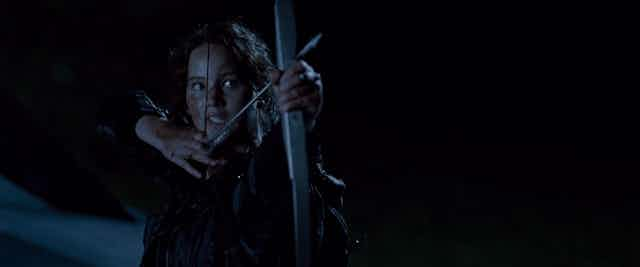The inevitable and universal nature of death has made it a popular topic of children’s literature. While death has appeared in these stories for centuries, death in young adult novels has become much darker and more complex.
The recent controversy over Netflix’s adaptation of the novel Thirteen Reasons Why, which depicts the aftermath of teen suicide, shows that dealing with death in kids’ fiction can be fraught. While some defended the show’s graphic depiction of suicide, others argued it was gratuitous and dangerous.
This raises the question of whether children’s literature and young adult fiction is still a safe place to discuss death. At the recent Emerging Writer’s Festival panel, Sex, Death and YA, young adult literature was celebrated for exploring such complex themes. While there may be a trend toward darker themes in literature written for a young adult audience, there is still room for hope.

Putting death on the page
When early works of children’s literature broached the topic of death, it was usually to show how the protagonist copes in the aftermath of the death of a family member or friend. In many of these early works, depictions of death were softened for the reader, occurring outside the text. For instance, Mary’s parents in The Secret Garden (1911) die “off page”, which acts as a plot device to facilitate Mary’s arrival at Mistlethwaite Manor, where she discovers the secret garden. Charlotte’s Web (1952) softens the blow by making the characters non-human – in this case a spider.
Modern young adult novels are different. These texts not only depict young adult protagonists dealing with the aftermath of a loved one’s death, but also the trauma of witnessing it. Such as in the case of The Outsiders (1967), when the 14-year-old protagonist Ponyboy is present when his best friend Johnny dies in hospital and when Dally, a member of Ponyboy’s gang, is killed by the police.
In recent years, young adult novels have featured their protagonists doing the killing. The characters in books such as Harry Potter (1997), The Hunger Games (2008) and Tomorrow When the War Began (1993), struggle not only with the inevitability of death and the pain of losing loved ones, but also with the guilt and ethical dilemma of having to kill to survive.

Life after death
There has recently been an influx of novels that present death from the perspective of the protagonist. These novels show characters who are terminally ill, presenting a rarely explored viewpoint in young adult novels - the perspective of dying. In books such as Sonya Hartnett’s Surrender (2005), Jenny Downham’s Before I Die (2007) and John Green’s The Fault in Our Stars (2012) the protagonist portrays the fear and pain of dying, the challenge of accepting one’s own mortality and the guilt of leaving their loved ones to cope after their death.
Other recent novels come from the perspective of someone who is already dead. They speak to the reader, and sometimes even their own friends and family, from beyond the grave, such as in Lauren Oliver’s Before I Fall (2010) and, although technically not a young adult novel, in Alice Sebold’s The Lovely Bones, which has been widely read by young people.
In the beginning of Jay Asher’s 2007 novel Thirteen Reasons Why it is made clear that the protagonist, Hannah Baker, has taken her own life. As the novel continues, Hannah’s story and the reasons for her actions are disclosed through a series of tapes, 13 in total, all recorded before her death.
The Netflix series also demonstrates the shift of how death is portrayed to an adolescent audience. While Asher’s novel leaves the method of Hannah’s suicide largely undisclosed, the series, released ten years after the book, portrays the suicide in excruciating detail.
Talking about death
There are many children’s picture books, such as The Heart and the Bottle by Oliver Jeffers, and Harry & Hopper written by Margaret Wild and illustrated by Freya Blackwood, that talk about death to help parents discuss the concept with young children, possibly for the first time. When talking to kids about loss and grief the Victorian government’s Better Health Channel recommends the use of “storybooks” to explain death, stating that, “It is important to recognise children’s feelings and speak with them honestly and directly about death and grief”.

Why is the honest and direct depiction of death in young adult novels often so controversial? Perhaps it comes from a desire to shelter young readers from topics such as war, terrorism, and human mortality – topics that young adult readers not only read about in the news and on social media, but experience. Or perhaps it is because depicting death is seen to be void of hope. But possibly the idea of hope has also shifted, away from a fairytale notion of happily ever after and towards a reality that acknowledges the existence of darkness and light.
There is little research on the possible benefits of discussing death with young people. For those who are yet to be affected by the death of a loved one, reading about it from the perspective of another young adult can offer a way of building resilience. For those readers who have experienced the death of a family member or friend, being able to read about the experiences of others can offer consolation. Death is an indisputable part of adolescent lives, and books can provide a place for them to reflect on its influence on life.

